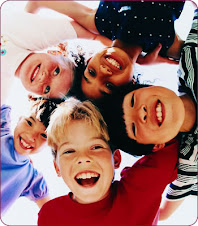This article is about international adoptions, focusing primarily on the instances in which the children, mostly from abusive pasts, have severe behavioral, mental, and emotional challenges that the parents aren't informed of or prepared for. After having heard about the seven-year-old Russian boy who was sent back on a plane without adult supervision, it seems that this is a rising topic of conversation. The subject of international adoption interests me. Why adopt internationally?
Well there are few answers to this question. One could be that the prospective parents have heard about tragedies children in orphanages abroad suffer. That is probably the most frequent answer parents give. Of course the agencies' reasons, in the best case scenarios, are primarily about protecting the welfare of the child. In poorer countries, it is entirely possible that a child's access to education, food, and health care would be vastly expanded by leaving the country.
I'm a little perplexed by the video accompanying the article. All about Guatemalan international adoption reform because of the Hague Convention.Hague Convention. I'm perplexed because this video is primarily from the touchy-feely perspective on international adoption: a series of interviews with happy white couples and images of gurgling Guatemalan babies. (Check out the clip of the little girl eating a leaf about forty seconds from the end. Very funny. Also, irritatingly for a Newsweek article, they put that one of the couples was "perspective" rather than "prospective" parents.) One of the couples was in the process of adopting their little boy, when he died in the orphanage. They were trying to adopt another child, but were concerned because there was an expiration date of sorts after which U.S. couples would probably not be able to adopt Guatemalan babies.
I suppose the consistent rhetorical link between the text and the vid is that the adoption agencies in other countries are frequently suspect. But the "Let the Children Come" message and the "kids become scary when they are abused so parents should be thoroughly informed of the circumstances surrounding their earlier life" message, though not incompatible, require a more nuanced connection than just putting them in the same web space. Both do seem to be sympathetic to the U.S. parents, even the woman who killed her two-year-old.
I think one of the big argumentative absences in this article is the inadequate discussion of racial and ethnic implications of many international adoptions. Also, the act of adopting a child from Eastern Europe makes me think about all of the Cold War tensions that exist in reinvented forms even today. "Rescuing" babies from Eastern Europe or from Guatemala or from Haiti means vastly different things. There is this illusion, for one thing, that someone can look like a U.S. citizen (and I am leaving aside, for a moment, the racial difference between parent and child). Perhaps a Russian or even Haitian child might be understood to "look" American, while a Guatemalan baby might not. Perhaps it's because I went to college in Texas, but I suspect people would think the baby was "Mexican." The overlap of national and racial identity is confusing and overlapping.
The issue with adoption is that a lot of adopted children must take on to a much greater extent and at a much earlier age the problems created by adults. As the article fairly points out, the behavioral or developmental issues of adopted children are of course not their fault. It is typically the fault of cruel or negligent adults. But it is the child that must take on those painful issues to such a profound extent.
Tuesday, April 27, 2010
Subscribe to:
Post Comments (Atom)

Just to clarify, I used the term "touchy feely" because an adoptive mother used that term to talk about the alternative, when "the worst" happens, "the worst" being the behavioral issues of a traumatized child.
ReplyDelete